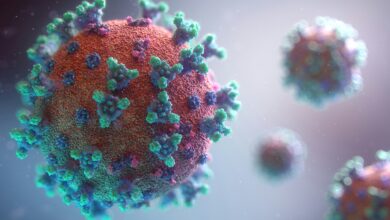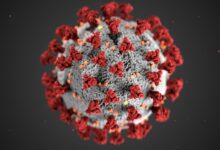Prostate Cancer: A Complete Guide to Causes, Symptoms, Diagnosis, and Treatment

(WE) — Prostate cancer is one of the most common cancers affecting men globally. It impacts the prostate gland—a small, walnut-shaped gland located just below the bladder and in front of the rectum—that plays a vital role in the male reproductive system by producing seminal fluid. This comprehensive article explores everything you need to know about prostate cancer, including causes, symptoms, prevention, diagnosis, and treatment options.
What Is Prostate Cancer?
Prostate cancer is a form of cancer that develops in the prostate—a small, walnut-shaped gland located just below the bladder in men. The prostate plays a crucial role in the male reproductive system by producing seminal fluid, which nourishes and transports sperm.
Prostate cancer occurs when cells in the prostate gland begin to grow uncontrollably. Like many other cancers, it can remain localized and slow-growing, or it can become aggressive and spread quickly to other parts of the body, particularly the bones and lymph nodes.
This cancer is among the most common types of cancer affecting men worldwide. According to the American Cancer Society, it is the second leading cause of cancer death among men in the United States, after lung cancer. However, with early detection and modern treatments, most men diagnosed with prostate cancer do not die from it.
There are several types of prostate cancer, but the most common is adenocarcinoma, which originates in the gland cells. Other rarer types include small cell carcinomas, neuroendocrine tumors, transitional cell carcinomas, and sarcomas.
The disease often develops without noticeable symptoms in the early stages, which is why regular screening through PSA (prostate-specific antigen) tests and digital rectal exams (DRE) are essential—especially for men over the age of 50 or those with risk factors.
In summary, prostate cancer is a potentially serious but highly treatable disease if detected early. Continued research and public awareness by organizations like the National Cancer Institute and Prostate Cancer Foundation are helping to improve survival rates and treatment outcomes for men globally.
What Causes Prostate Cancer?
The exact causes of prostate cancer are not fully understood, but scientists have identified several risk factors and biological processes that contribute to the disease. Prostate cancer begins when cells in the prostate gland undergo genetic changes (mutations) that cause them to grow and divide uncontrollably, eventually forming a tumor.
Here’s a breakdown of what is currently known about the causes and risk factors of prostate cancer:
1. Age
One of the strongest risk factors for prostate cancer is age. According to the Centers for Disease Control and Prevention (CDC), most cases are diagnosed in men over the age of 65. It is rare in men under 40, but the risk increases significantly with each decade of life.
2. Genetics and Family History
Men with a family history of prostate cancer are at a higher risk. If a father, brother, or other close relative has been diagnosed, the risk may be two to three times higher than average.
Certain inherited genetic mutations are linked to increased risk:
- BRCA1 and BRCA2 genes (commonly associated with breast and ovarian cancer)
- HOXB13 gene mutations
- Lynch syndrome, a hereditary condition also linked to colorectal cancer
The National Cancer Institute (NCI) notes that while these genetic factors account for a small percentage of cases, they are significant in families with strong cancer histories.
3. Race and Ethnicity
Race plays a role in prostate cancer risk:
- African American men have the highest incidence and are more than twice as likely to die from prostate cancer as white men.
- Men of Caribbean descent with African ancestry also face higher risks.
- Asian American and Hispanic men generally have lower risk than non-Hispanic white men.
The reasons behind these disparities are still being studied, but researchers at institutions like Johns Hopkins Medicine believe a combination of genetic, environmental, and healthcare access factors may contribute.
4. Hormones
Androgens—especially testosterone—play a central role in prostate development and function. Elevated levels of testosterone or an imbalance in hormone regulation may fuel the growth of prostate cancer cells.
Drugs that suppress androgen activity, called androgen deprivation therapy (ADT), are often used as a treatment for advanced prostate cancer. This further confirms the hormonal link to the disease.
5. Diet and Lifestyle
Dietary and lifestyle choices may also influence prostate cancer risk:
- High-fat diets, particularly those rich in red meat and full-fat dairy products, have been loosely associated with increased risk.
- Low intake of fruits and vegetables, which are rich in antioxidants, may reduce the body’s ability to protect itself from cancer-causing oxidative stress.
- Obesity and a sedentary lifestyle are linked to more aggressive forms of prostate cancer.
The World Cancer Research Fund has published detailed analyses on how diet, weight, and physical activity impact prostate cancer development.
6. Inflammation and Infection
Some studies suggest chronic inflammation of the prostate, known as prostatitis, may contribute to the development of cancer over time. Likewise, certain sexually transmitted infections (STIs) may increase the risk by causing inflammation or cellular changes in the prostate.
However, more research is needed to confirm a direct link between infection and cancer development.
7. Chemical Exposure
Men exposed to certain chemicals, such as Agent Orange (a herbicide used during the Vietnam War), may have a slightly increased risk of developing prostate cancer. The U.S. Department of Veterans Affairs recognizes prostate cancer as a presumptive condition for Agent Orange exposure among veterans.
8. Environmental and Occupational Hazards
Exposure to cadmium, a heavy metal found in batteries and industrial environments, and certain pesticides has also been investigated as a potential risk factor, though the data are inconclusive.
What Are the Symptoms of Prostate Cancer?
Prostate cancer is often called a “silent” disease because it typically develops without symptoms in its early stages. Many men may have the disease for years without knowing it. This is why regular screening, such as a PSA (prostate-specific antigen) blood test and a digital rectal exam (DRE), is crucial—especially for those over 50 or with risk factors like family history or African American ancestry.
However, as the cancer grows or spreads, it may start to produce noticeable symptoms. These symptoms can vary depending on the tumor’s size, growth rate, and whether it has spread beyond the prostate.
Here are the most common symptoms associated with prostate cancer:
1. Urinary Problems
Since the prostate gland surrounds the urethra (the tube that carries urine out of the body), any enlargement due to cancer can affect urination. Common urinary symptoms include:
- Frequent urination, especially at night (nocturia)
- Difficulty starting or stopping urination
- Weak or interrupted urine flow
- Burning or pain during urination
- Sensation of incomplete bladder emptying
- Dribbling at the end of urination
These symptoms are also associated with benign prostatic hyperplasia (BPH), a non-cancerous enlargement of the prostate, but they can’t be ignored.
2. Blood in Urine or Semen
The presence of blood in the urine (hematuria) or blood in the semen is a less common symptom but may indicate an underlying prostate issue, including cancer.
3. Pain or Discomfort
Some men with prostate cancer experience:
- Painful ejaculation
- Pelvic discomfort
- Pain in the hips, thighs, or lower back
Pain is often a sign that the cancer may have spread (metastasized) beyond the prostate, especially into the bones.
4. Erectile Dysfunction (ED)
While erectile dysfunction is common with aging, sudden or worsening ED may be a sign of prostate cancer, especially if accompanied by other urinary or pelvic symptoms.
5. Loss of Bladder or Bowel Control (in advanced cases)
In later stages, if prostate cancer spreads to the spine or presses on nerves, it can cause:
- Loss of bladder control
- Bowel dysfunction
- Numbness or weakness in the legs or feet
These are serious symptoms that indicate potential spinal cord involvement and should be addressed immediately.
6. Unexplained Weight Loss and Fatigue
As with many cancers, advanced prostate cancer may cause:
- Unintended weight loss
- Persistent fatigue
- Loss of appetite
These general symptoms may indicate that the cancer is impacting overall metabolism or has spread to other organs.
When to See a Doctor?
If you experience any of the above symptoms, particularly:
- Difficulty urinating
- Blood in your urine or semen
- Pain in the pelvic area
- Unexplained fatigue or weight loss
…it’s important to speak with a healthcare provider. While these symptoms may have benign causes, early detection of prostate cancer significantly improves treatment outcomes.
What Are the 5 Early Signs of Prostate Cancer?
In its early stages, prostate cancer often grows slowly and may not produce noticeable symptoms. That’s why it’s sometimes called a “silent killer.” However, in some cases, subtle changes do occur that can act as early warning signs.
Here are the five most common early signs of prostate cancer that men should pay close attention to:
1. Frequent Urination, Especially at Night (Nocturia)
Men with early prostate cancer often notice the urge to urinate more often, particularly during the night. This is due to the tumor pressing against or affecting the urethra (the tube that carries urine out of the body), which runs through the prostate.
While this symptom can also be caused by benign prostatic hyperplasia (BPH), if it becomes more persistent or worsens over time, it should not be ignored.
2. Difficulty Starting or Stopping Urination
A growing tumor in the prostate may interfere with the muscles and nerves responsible for controlling the flow of urine. You may experience:
- Trouble initiating the stream
- A feeling of straining
- A weak or interrupted stream
- Dribbling at the end of urination
These symptoms could indicate either a non-cancerous enlargement or cancerous growth and require evaluation.
3. Pain or Burning Sensation During Urination or Ejaculation
While less common, pain or discomfort during urination or ejaculation could be an early sign of prostate inflammation or cancer. These symptoms often mimic infections like prostatitis, but if they persist without signs of infection, further tests may be necessary.
Johns Hopkins Medicine notes that these signs, while non-specific, can indicate early prostate abnormalities.
4. Blood in Urine or Semen (Hematuria or Hematospermia)
The appearance of blood in your urine or semen may be one of the more alarming early signs. It can occur if a tumor disrupts blood vessels in the prostate or surrounding tissues.
While this is relatively rare in the early stages, its presence should prompt immediate medical attention, as it can also be a sign of other serious urologic conditions, including bladder cancer or infection.
5. Erectile Dysfunction (ED)
Although ED is commonly linked to aging and cardiovascular health, it can sometimes be an early indication of prostate cancer. Tumor growth in the prostate may affect nerves and blood vessels needed for an erection, especially if located near the neurovascular bundles.
The Cleveland Clinic emphasizes that any new or worsening erectile issues—especially when accompanied by urinary symptoms—should be evaluated.
Why Early Signs Matter
Catching prostate cancer early significantly increases the likelihood of successful treatment. According to the American Urological Association (AUA), most early-stage prostate cancers are curable, especially when localized within the prostate gland. This makes it crucial for men—especially those over 50 or with risk factors such as family history or African ancestry—to stay vigilant and undergo regular screenings.
What to Do If You Notice Symptoms?
If you’re experiencing one or more of these symptoms:
- Make an appointment with a urologist
- Get a PSA blood test to measure prostate-specific antigen levels
- Consider a digital rectal exam (DRE) to detect prostate irregularities
- Request further imaging or a biopsy if recommended
Resources like the Prostate Cancer Foundation offer symptom checkers and guidance on what to expect during evaluations.
What Is the Life Expectancy of Someone With Prostate Cancer?
Life expectancy for someone with prostate cancer depends heavily on the stage at diagnosis, the person’s age, overall health, and how well the cancer responds to treatment. Prostate cancer is typically slow-growing, and when detected early—before it has spread outside the prostate—the prognosis is excellent. According to the American Cancer Society, the 5-year survival rate for localized or regional prostate cancer is nearly 100%, meaning most men diagnosed early will live at least five years, and many live much longer.
In contrast, if prostate cancer is detected after it has spread to distant organs (commonly the bones), the survival outlook changes significantly. For stage 4 prostate cancer, the 5-year survival rate drops to around 32%, based on data from the National Cancer Institute (NCI). However, it’s important to understand that these are statistical averages—some men with advanced prostate cancer respond exceptionally well to newer therapies and can live well beyond five years, especially with aggressive and targeted treatment.
Age plays a major role in survival outcomes. Men diagnosed with prostate cancer in their 60s or 70s often have other health conditions that may affect longevity more than the cancer itself. Many older men with low-risk, slow-growing prostate cancer opt for “active surveillance” rather than immediate treatment. According to Mayo Clinic, many of these men live normal life spans without the cancer ever causing major issues.
Ultimately, prostate cancer is among the most treatable cancers when caught early. Advances in immunotherapy, hormone therapy, radiation, and targeted drugs continue to improve outcomes. Early diagnosis, regular screening, and personalized care plans remain the most effective ways to extend life expectancy and preserve quality of life for those diagnosed.
How Fast Does Prostate Cancer Spread?
The speed at which prostate cancer spreads depends on multiple factors, including the type of cancer, the Gleason score, PSA (prostate-specific antigen) levels, and whether it’s localized or already metastasized. In general, prostate cancer is known to be one of the slowest-growing cancers, especially when it is confined to the prostate gland. Many men with localized prostate cancer may never experience life-threatening progression during their lifetime, particularly when diagnosed at an older age.
That said, not all prostate cancers behave the same. Aggressive forms—identified by high Gleason scores (usually 8 to 10) and rapidly rising PSA levels—can spread more quickly. These cancers can extend beyond the prostate to nearby seminal vesicles, lymph nodes, bones, or even distant organs within months to a few years if left untreated. According to the National Cancer Institute, prostate cancer most commonly metastasizes to the bones, particularly the hips, spine, and ribs, where it can cause severe pain and other complications.
To determine how fast a specific case of prostate cancer may progress, doctors evaluate key clinical factors:
- PSA doubling time: how quickly the PSA level increases can indicate tumor growth rate.
- Gleason score: a grading system that assesses how abnormal the cancer cells look under a microscope.
- Tumor staging (T1–T4): which shows how much the cancer has spread locally.
In more aggressive cases, prostate cancer can metastasize in as little as 1–2 years, particularly in younger, otherwise healthy men. However, many cases are slow-moving and monitored through active surveillance, especially if the cancer is small, low-grade, and not causing symptoms. With regular screening and close observation by healthcare providers, the speed and progression of prostate cancer can often be managed effectively.
Read More:
- Is North America Facing a Measles Outbreak?
- What is Measles? Symptoms, Causes, Treatment, and How to Prevent Infection
- What Is Autism? Causes, Symptoms, and Genetics Explained
What If You Don’t Treat Prostate Cancer?
Choosing not to treat prostate cancer is a decision that depends on several factors—including the type of cancer, how aggressive it is, your age, overall health, and personal preferences. For many men, especially older adults with low-risk or slow-growing prostate cancer, a strategy known as active surveillance or watchful waiting may be recommended instead of immediate treatment. In such cases, the cancer may never progress to a life-threatening stage, and men can live normal life spans without experiencing major symptoms or side effects from treatment.
However, if prostate cancer is aggressive and left untreated, it can progress significantly over time. The disease can grow beyond the prostate gland and invade nearby tissues such as the seminal vesicles, bladder, or rectum. Eventually, it may spread (metastasize) to distant parts of the body, most commonly the bones, liver, or lungs. This can lead to severe complications like bone fractures, chronic pain, urinary obstruction, or even kidney failure.
Men who forgo treatment entirely for intermediate or high-risk prostate cancer may face a sharp decline in health once the disease begins to spread. According to the Prostate Cancer Foundation, untreated advanced prostate cancer has a significantly lower survival rate, and life expectancy can drop to less than 5 years once the cancer becomes metastatic, depending on the location and extent of the spread.
In short, while not all prostate cancers require immediate treatment, completely ignoring the disease—especially in more aggressive forms—can lead to serious health consequences. If you’re considering delaying or declining treatment, it’s essential to work closely with a urologist or oncologist to monitor the cancer’s behavior through regular PSA testing, biopsies, and imaging studies to make informed decisions and avoid dangerous progression.
What Is the Longest Someone Has Lived With Stage 4 Prostate Cancer?
While stage 4 prostate cancer is considered advanced and incurable, it is not always immediately fatal—and some men have lived for a decade or more with proper treatment and monitoring. The exact time a person can live with stage 4 prostate cancer varies widely, depending on the aggressiveness of the cancer, how early it’s caught, how well it responds to treatment, and the patient’s overall health and age.
There are documented cases of men living 15 to 20 years after a stage 4 prostate cancer diagnosis. One often-cited example is Stephen Fry, the British actor and writer, who was diagnosed with aggressive prostate cancer involving the lymph nodes. Though not classified as stage 4 at the time, his case showed how modern treatments—like robotic surgery, hormone therapy, and immunotherapy—can manage even high-risk prostate cancer long-term. Another example is patients participating in clinical trials involving drugs like enzalutamide, abiraterone, or LuPSMA (Lutetium-177-PSMA-617), which have extended lives significantly, even in metastatic castration-resistant prostate cancer (mCRPC).
According to the National Cancer Institute SEER database, the 5-year survival rate for distant (stage 4) prostate cancer is around 32%, but this doesn’t tell the full story. With new treatments, some men are exceeding that timeline, especially when their cancer responds well to targeted therapies and bone-directed treatments like Xofigo (radium-223).
In essence, the longest someone has lived with stage 4 prostate cancer could be 20 years or more, especially with personalized care and access to evolving therapies. The key is aggressive medical management, early detection of metastasis, and staying engaged with advancements in cancer treatment.
How to Check for Prostate Cancer at Home?
While there is no reliable way to definitively diagnose prostate cancer at home, being aware of certain symptoms, monitoring your health, and using at-home PSA testing kits can be a proactive first step. However, any suspicion of prostate cancer should be followed up by a healthcare professional for proper diagnosis.
1. Watch for Symptoms
Though prostate cancer often has no symptoms in its early stages, some warning signs may appear as it grows. At home, you can monitor for:
- Frequent urination, especially at night
- Weak or interrupted urine stream
- Pain or burning during urination
- Erectile dysfunction
- Blood in urine or semen
- Discomfort in the pelvic area or lower back
If you notice one or more of these symptoms—especially if they persist—it’s essential to consult a urologist.
2. Use At-Home PSA Test Kits
Some companies offer at-home PSA (Prostate-Specific Antigen) test kits. These tests measure the level of PSA in your blood, which can indicate problems with the prostate—including cancer, benign prostatic hyperplasia (BPH), or prostatitis.
Here are a few reputable brands offering FDA-authorized PSA testing:
These kits typically require a finger prick blood sample that you mail to a certified lab. You’ll receive results within a few days, often through a secure online portal.
Important: Elevated PSA levels do not always mean cancer—they can rise due to infection, inflammation, or enlargement of the prostate. Likewise, some men with prostate cancer have normal PSA levels. That’s why PSA results should always be interpreted in consultation with a doctor.
3. Understand Your Risk Factors
Men at higher risk—such as those who are over 50, are Black, or have a family history of prostate cancer—should be particularly proactive. For these individuals, early screening (starting around age 40–45) may be recommended.
4. Know What You Can’t Do at Home
You cannot perform a digital rectal exam (DRE) at home, which is another standard method for detecting prostate abnormalities. This exam must be done by a trained healthcare provider.
Is Prostate Cancer Curable?
Yes, prostate cancer is often curable, especially when diagnosed early and confined to the prostate gland. In fact, prostate cancer has one of the highest survival rates among all cancers. According to the American Cancer Society, the 5-year relative survival rate for men with localized or regional prostate cancer is nearly 100%.
When Is Prostate Cancer Curable?
Prostate cancer is most curable when it is:
- Localized (contained within the prostate)
- Low to intermediate risk
- Diagnosed early, often through routine PSA testing or digital rectal exams (DRE)
In such cases, men can be treated successfully using:
- Radical prostatectomy (surgical removal of the prostate)
- Radiation therapy (external beam or brachytherapy)
- Active surveillance (for very slow-growing cancers)
These treatments can lead to complete remission, meaning there are no signs of cancer in the body.
Can Advanced Prostate Cancer Be Cured?
Once prostate cancer reaches stage 4—meaning it has spread to distant organs or bones—it is generally not considered curable, but it is often treatable. Treatment focuses on slowing progression, reducing symptoms, and prolonging life. Options include:
- Hormone therapy (androgen deprivation therapy)
- Chemotherapy
- Targeted therapy like abiraterone or enzalutamide
- Radiopharmaceuticals like Xofigo
- Immunotherapy
Some patients with metastatic prostate cancer have survived 10–15 years or more, especially when participating in clinical trials or receiving personalized treatment plans.
Ongoing Monitoring and Survivorship
Even after successful treatment, prostate cancer patients require ongoing follow-ups with PSA testing and physical exams. Some cancers can recur, so early detection of recurrence is key to long-term survival.
For more information, consult resources like the National Cancer Institute and the Prostate Cancer Foundation.
How to Prevent Prostate Cancer?
While there is no guaranteed way to prevent prostate cancer, adopting healthy lifestyle habits and understanding personal risk factors can significantly reduce your chances. Prostate cancer is the most common cancer among men in the United States after skin cancer, but it often grows slowly and is highly treatable when detected early. Prevention focuses on nutrition, exercise, screening, and lifestyle choices.
1. Maintain a Healthy Diet
A. Eat More Plant-Based Foods
A diet rich in vegetables, fruits, whole grains, and legumes provides essential antioxidants and nutrients that may protect the prostate.
- Tomatoes are high in lycopene, a compound associated with a lower risk of prostate cancer.
- Cruciferous vegetables like broccoli, kale, and Brussels sprouts contain sulforaphane, which may help kill cancer cells.
- Soy and legumes contain phytoestrogens, which may influence hormone levels and reduce cancer risk.
Harvard Medical School and Mayo Clinic both emphasize the role of nutrition in reducing cancer risk.
B. Reduce Red and Processed Meat
Several studies link high intake of red and processed meats to a greater risk of prostate cancer. Opt for lean proteins like fish, poultry, and plant-based alternatives.
C. Limit Dairy and High-Calcium Diets
Some research suggests that excess calcium intake (especially from supplements or dairy products) might be associated with a higher risk of prostate cancer. Moderation is key.
2. Exercise Regularly
Physical activity has been shown to lower the risk of aggressive prostate cancer and improve overall health. Aim for:
- 150 minutes of moderate aerobic activity (like walking or swimming) per week
- Strength training at least twice a week
Exercise helps manage obesity, inflammation, and hormonal balance, all of which are associated with prostate cancer risk. The American Cancer Society recommends regular activity as part of cancer prevention.
3. Maintain a Healthy Weight
Obesity is linked to a higher risk of aggressive prostate cancer and worse outcomes after diagnosis. Managing weight through diet and exercise can improve hormone regulation and reduce inflammation.
According to the National Cancer Institute, reducing obesity-related risk factors may improve overall cancer outcomes, including for prostate cancer.
4. Know Your Risk Factors
A. Age
Prostate cancer risk rises after age 50. About 60% of cases occur in men over 65.
B. Race and Ethnicity
Black men have a significantly higher risk of prostate cancer and are more likely to be diagnosed with aggressive forms. Hispanic and Asian men typically have lower rates but are not immune.
C. Family History
Having a father or brother with prostate cancer more than doubles your risk. Inherited gene mutations like BRCA1, BRCA2, or HOXB13 can increase your susceptibility.
D. Genetic Testing
Men with a strong family history or known genetic risks may benefit from genetic counseling and early screening. Organizations like Myriad Genetics and Color Genomics offer genetic tests to assess cancer risk.
5. Get Regular Screenings
Although prostate cancer screening is controversial, early detection can be lifesaving—especially for high-risk men.
- PSA (Prostate-Specific Antigen) test: A blood test to detect elevated PSA levels
- Digital Rectal Exam (DRE): A doctor checks the prostate for irregularities
The U.S. Preventive Services Task Force (USPSTF) recommends that men aged 55–69 discuss PSA testing with their doctor to make an informed decision. Those at high risk (e.g., Black men or men with a family history) may consider screening earlier, starting around age 40–45.
6. Avoid Smoking and Limit Alcohol
Smoking increases the risk of many cancers, including more aggressive forms of prostate cancer. If you smoke, consider quitting with help from Smokefree.gov.
Alcohol, especially in excess, may also increase cancer risk. Stick to moderate drinking guidelines—no more than 2 drinks per day for men, per the CDC.
7. Consider Medications (for High-Risk Individuals)
Some men at high risk may benefit from preventive medications like:
- Finasteride (Proscar)
- Dutasteride (Avodart)
These 5-alpha reductase inhibitors, typically used to treat benign prostatic hyperplasia (BPH), have been shown in studies like the Prostate Cancer Prevention Trial (PCPT) to reduce the risk of prostate cancer. However, they may increase the likelihood of higher-grade tumors, so discuss risks and benefits with your doctor.
8. Manage Chronic Health Conditions
Chronic issues like diabetes, high cholesterol, and hypertension may indirectly influence cancer development. Keeping these under control through proper treatment and a healthy lifestyle supports long-term prostate health.
9. Stay Informed and Engaged
Prostate cancer prevention is an evolving field. Stay updated through trusted sources like:
- Prostate Cancer Foundation (PCF)
- National Cancer Institute (NCI)
- American Urological Association (AUA)
These organizations provide up-to-date research, treatment guidelines, and educational resources.
How Many Radiation Treatments Are Needed for Prostate Cancer?
The number of radiation treatments for prostate cancer varies depending on several factors including the stage of cancer, type of radiation therapy, patient health, and treatment goals. Radiation therapy is a common and effective treatment option for prostate cancer, either used alone or alongside surgery and/or hormone therapy.
Common Types of Radiation Therapy for Prostate Cancer
- External Beam Radiation Therapy (EBRT)
- This involves directing high-energy X-rays at the prostate from outside the body.
- Typically, EBRT is delivered in fractions (daily treatments) over several weeks.
- Brachytherapy (Internal Radiation)
- Involves implanting radioactive seeds directly into the prostate.
- Usually done in one or two sessions but may be combined with EBRT.
Typical Radiation Treatment Schedules
1. Conventional Fractionation (Standard EBRT)
- Treatment usually lasts about 7 to 9 weeks, with 5 sessions per week (Monday through Friday).
- This totals approximately 35 to 45 treatments.
- Each session lasts only a few minutes.
2. Hypofractionated Radiation Therapy
- Higher doses of radiation are given in fewer sessions over a shorter time.
- Usually delivered in 4 to 6 weeks with about 20 to 28 treatments.
- Studies, such as those from MD Anderson Cancer Center, show this approach is effective and convenient for many men.
3. Stereotactic Body Radiation Therapy (SBRT)
- A very precise form of radiation delivering high doses in 5 or fewer sessions.
- This ultra-short course can be completed within 1 to 2 weeks.
- Often suitable for low- or intermediate-risk prostate cancer patients.
Factors Influencing Number of Treatments
- Cancer Stage and Risk: More advanced or high-risk cancers might need longer courses or combined treatments.
- Combination Therapy: Patients receiving hormone therapy or brachytherapy might have fewer EBRT sessions.
- Patient Health: Overall health and tolerance to treatment can affect scheduling.
Follow-Up and Monitoring
After radiation treatment, regular follow-up with PSA testing and imaging is crucial to monitor treatment response and detect any recurrence early.
Final Thoughts
Prostate cancer is a serious but often treatable condition when detected early. With advances in medical technology, treatment options have broadened significantly, and survival rates continue to improve. Regular screenings, healthy lifestyle choices, and awareness of early symptoms are the keys to effective management.
Whether you’re newly diagnosed, supporting a loved one, or aiming to reduce your risk, staying informed is one of the most powerful tools at your disposal.
Organizations Offering Guidance and Support
- The American Cancer Society (ACS) offers patient guides and symptom checklists.
- The Mayo Clinic provides resources on symptoms and when to seek medical help.
- The Prostate Cancer Foundation (PCF) supports early detection awareness campaigns and offers support for patients and families.
Trusted Medical Sources:
- American Cancer Society (ACS) – Comprehensive info on prostate cancer causes, symptoms, and treatment.
- National Cancer Institute (NCI) – U.S. government source on diagnosis, stages, and therapies.
- Mayo Clinic – Trusted resource for symptoms, prognosis, and prevention.
- Johns Hopkins Medicine – Research and clinical care info.
- Prostate Cancer Foundation (PCF) – Dedicated to research and education.
Radiation Therapy Info
- American Society for Radiation Oncology (ASTRO) – Details on radiation types and schedules.
- MD Anderson Cancer Center – Expert content on SBRT and advanced treatments.














